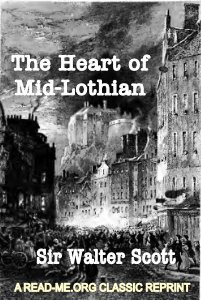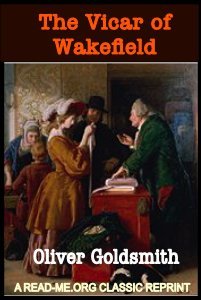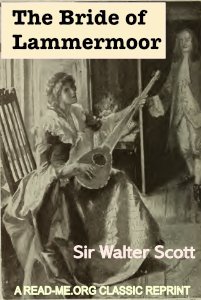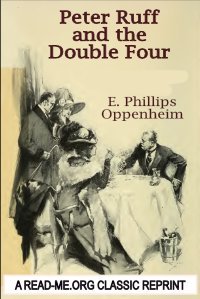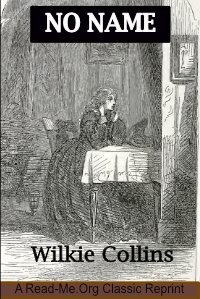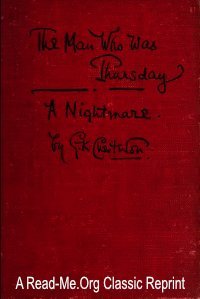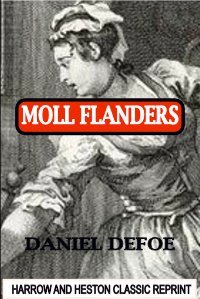Edited by Maria Aristodemou; Fiona Macmillan; Patricia Tuitt
This book opens up a range of important perspectives on law and violence by considering the ways in which their relationship is formulated in literature, television and film. Employing critical legal theory to address the relationship between crime fiction, law and justice, it considers a range of topics, including: the relationship between crime fiction, legal reasoning and critique; questions surrounding the relationship between law and justice; gender issues; the legal, political and social impacts of fictional representations of crime and justice; post-colonial perspectives on crime fiction; as well as the impact of law itself on the crime fiction’s development. Introducing a new sub-field of legal and literary research, this book will be of enormous interest to scholars in critical, cultural and socio-legal studies, as well as to others in criminology, as well as in literature.
Abingdon, Oxon, OX; New York: Birkbeck Law Press; 2017. 181p.
By Josef Hoffmann
Josef Hoffmann covers influences and inspirations in crime writing with references to a stellar cast of crime writers including Arthur Conan Doyle, G. K. Chesterton, Dashiell Hammett, Albert Camus, Borges, Agatha Christie, Raymond Chandler, and Ted Lewis. Hoffmann examines why crime literature may provide stronger consolation for readers than philosophy. In so doing, he demonstrates the truth of Wittgenstein's claim that more wisdom is contained in the best crime fiction than in philosophical essays. Josef Hoffmann's combination of knowledge, academic acuity, and enthusiasm makes this a must-have book for any crime fiction aficionado—with or without a philosophical nature.
Harpenden, Herts, UK: No Exit Press, 2013. 192p.
By Christiana Gregoriou
This book explores the three aspects of deviance that contemporary crime fiction manipulates: linguistic, social, and generic. Gregoriou conducts case studies into crime series by James Patterson, Michael Connelly and Patricia Cornwell, and investigates the way in which these novelists correspondingly challenge those aforementioned conventions.
Houndmills, Basingstoke, Hampshire; New York: Palgrave Macmillan, 2007. 189p.
By Lisa Hopkins
This book explores why crime fiction so often alludes to Shakespeare. It ranges widely over a variety of authors including classic golden age crime writers such as the four ‘queens of crime’ (Allingham, Christie, Marsh, Sayers), Nicholas Blake and Edmund Crispin, as well as more recent authors such as Reginald Hill, Kate Atkinson and Val McDermid. It also looks at the fondness for Shakespearean allusion in a number of television crime series, most notably Midsomer Murders, Inspector Morse and Lewis, and considers the special sub-genre of detective stories in which a lost Shakespeare play is found. It shows how Shakespeare facilitates discussions about what constitutes justice, what authorises the detective to track down the villain, who owns the countryside, national and social identities, and the question of how we measure cultural value.
London; New York: Palgrave Macmillan, 2016. 211p.
By Charles Dickens
Illustrations by John Leech. Probably Dickens’s best known work, certainly a permanent fixture every Christmas. Feuding with his publishers, Dickens financed the publishing of the book himself, ordering lavish binding, gilt edging, and hand-colored illustrations and then setting the price at no more than five shillings. This combination resulted in disappointingly low profits despite high sales.
Chapman and Hall. (1843) 101 pages.
By Wilkie Collins.
The loss of the diamond opens the beginning of this adventure and events as related by Gabriel Betteredge, house-steward in the service of Julia, Lady Verinder. “ The Moonstone is a 19th-century British epistolary novel. It is an early modern example of the detective novel, and established many of the ground rules of the modern genre. Told from the perspective of 11different characters, tale of mystery and suspicion was considered the first modern English detective novel at its time of publication.” (Amazon).
NY. Harrow and Heston Classic Reprint. (1868) 510 pages.
By Sir Walter Scott.
“Edinburgh, 1736: an indignant crowd has gathered in the Grassmarket to watch the execution of a smuggler...” Opening with the start of the Porteous Riots, The Heart of Midlothian is one of Walter Scott's most famous historical novels, featuring murder, madness and seduction. Following his brutal suppression of the spectators, John Porteous, Captain of the Guard, is charged with murder and locked up in Edinburgh's Tolbooth prison, also known as the Heart of Midlothian. When news comes that he has been pardoned, an angry mob breaks into the jail, liberating its inmates and bringing Porteous to its own form of justice. But one prisoner who fails to take this opportunity to flee is Effie Deans, who, wrongly convicted of infanticide, has been sentenced to death. Jeanie, her older sister, sets off to London on foot to beg for her pardon from the queen.
Boston: Dana Estes & Co., 1893.
By Oliver Goldsmith.
“When Dr Primrose loses his fortune in a disastrous investment, his idyllic life in the country is shattered and he is forced to move with his wife and six children to an impoverished living on the estate of Squire Thornhill. Taking to the road in pursuit of his daughter, who has been seduced by the rakish Squire, the beleaguered Primrose becomes embroiled in a series of misadventures–encountering his long-lost son in a travelling theatre company and even spending time in a debtor’s prison. Yet Primrose, though hampered by his unworldliness and pride, is sustained by his unwavering religious faith. In The Vicar of Wakefield, Goldsmith gently mocks many of the literary conventions of his day–from pastoral and romance to the picaresque – infusing his story of a hapless clergyman with warm humour and amiable social satire.”
J.C. Krieger and Company, 1828 300p.
By Sir Walter Scott.
“The Author, on a former occasion, declined giving the real source from which he drew the tragic subject of this history, because, though occurring at a distant period, it might possibly be unpleasing to the feelings of the descendants of the parties. But as he finds an account of the circumstances given in the Notes to Law's Memorials by his ingenious friend Charles Kirkpatrick Sharpe, Esq., and also indicated in his reprint of the Rev. Mr. Symson's poems, appended to the Description of Galloway as the original of the Bride of Lammermoor, the Author feels himself now at liberty to tell the tale as he had it from connections of his own, who lived very near the period, and were closely related to the family of the Bride.
London: Collins Clear -Type Press, 1900. 416p.
By E. Phillips Oppenheim.
“… Opposite him, at the other end of the table, sat his wife, Mrs. Barnes, a somewhat voluminous lady with a high colour, a black satin frock, and many ornaments. On her left the son of the house, eighteen years old, of moderate stature, somewhat pimply, with the fashion of the moment reflected in his pink tie with white spots, drawn through a gold ring, and curving outwards to seek obscurity underneath a dazzling waistcoat.”
Boston: Little, Brown, 1912. 424p.
By Wilkie Collins.
This book is a 19th-century novel by the master of sensation fiction, Wilkie Collins. A country gentleman is killed in an accident and his wife dies shortly after him. The blow is double for their daughters, who discover that they were born before their parents were married. Their sudden illegitimacy robs them of their inheritance and their accustomed place in society.
New York: Harper and Brothers, 1873. 622p.
By Wilkie Collins. .
A Novel . Two of the characters which appear in these pages -- "Rosamond," and "Uncle Joseph" -- had the good fortune to find friends everywhere who took a hearty liking to them. A more elaborately drawn personage in the story -- "Sarah Leeson" -- was, I think, less generally understood. The idea of tracing, in this character, the influence of a heavy responsibility on a naturally timid woman, whose mind was neither strong enough to bear it, nor bold enough to drop it altogether, was a favorite idea with me, at the time, and is so much a favorite still, that I privately give "Sarah Leeson" the place of honor in the little portrait-gallery which my story contains.
London: Bradbury and Evans, 1857. 322p.
By G.K. Chesterton.
When two men decide to fight for their respective beliefs, they discover to their astonishment that an unbelieving world won’t let them, and they find themselves partners and fugitives from the law in this steampunk satire. Penned by G.K. Chesterton in 1909, this whimsical and biting novel eerily foreshadows a world in which “tolerance” is the only god and all those who believe ideas are worth dying for are forced to stand together to defend freedom of speech and belief.
New York: J. Lane, 1909. 436p.
By G.K. Chesterton.
It is very difficult to classify The Man Who Was Thursday. It is possible to say that it is a gripping adventure story of murderous criminals and brilliant policemen; but it was to be expected that the author of the Father Brown stories should tell a detective story like no-one else. On this level, therefore, The Man Who Was Thursday succeeds superbly; if nothing else, it is a magnificent tour-de-force of suspense-writing. However, the reader will soon discover that it is much more than that. Carried along on the boisterous rush of the narrative by Chesterton’s wonderful high-spirited style, he will soon see that he is being carried into much deeper waters than he had planned on; and the totally unforeseeable denouement will prove for the modern reader, as it has for thousands of others since 1908 when the book was first published, an inevitable and moving experience, as the investigators finally discover who Sunday is.
Bristol: J.W. Arrowsmith, 1908. 329p.
By Daniel Defoe.
Moll Flanders follows the life of its eponymous heroine through its many vicissitudes, which include her early seduction, careers in crime and prostitution, conviction for theft and transportation to the plantations of Virginia, and her ultimate redemption and prosperity in the new World. “When a woman debauched from her youth, nay, even being the offspring of debauchery and vice, comes to give an account of all her vicious practices, and even to descend to the particular occasions and circumstances by which she ran through in threescore years, an author must be hard put to it wrap it up so clean as not to give room, especially for vicious readers, to turn it to his disadvantage.”
NY. Harrow and Heston Classic Reprint. (1772) 502 pages.
By Charles Dickens..
This is a rare detective story of Charles Dickens. The main character is a smart and attentive man named Sampson. One day he sees a strange Mr. Julius Silton in his office acting strangely as though he is hiding something. Sampson suspects that a crime is occurring and and from this point he becomes a real hunter of criminals. The story's antagonist is probably based on the real life of poisoner Thomas Wainewright.
NY. Harrow and Heston Classic Reprint. (1859) 39 pages.
By Charles Dickens.
This is Dickens’ tenth novel, published without illustrations, in Household Word, his weekly journal. Dickens continues to fly the banner of social reform, touching on themes of industrialization, education, and utilitarianism in the sweeping Industrial Revolution of the 1850's.
NY. Harrow and Heston Classic Reprint. (1854) 302 pages.
By Charles Dickens.
This was Charles Dickens' thirteenth novel published in Dickens' weekly journal All the Year Round without illustrations. An American edition was also published in Harper's Weekly. The novel contains a strong autobiographical element, though not as openly as in David Copperfield. Dickens reread Copperfield before beginning Great Expectations to avoid unintentional repetition. It is generally acclaimed as his best work.
NY. Harrow and Heston Classic Reprint. (186-1861) 521 pages.









